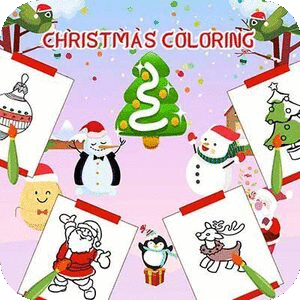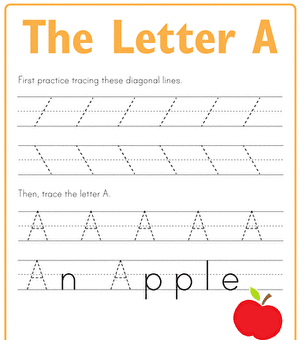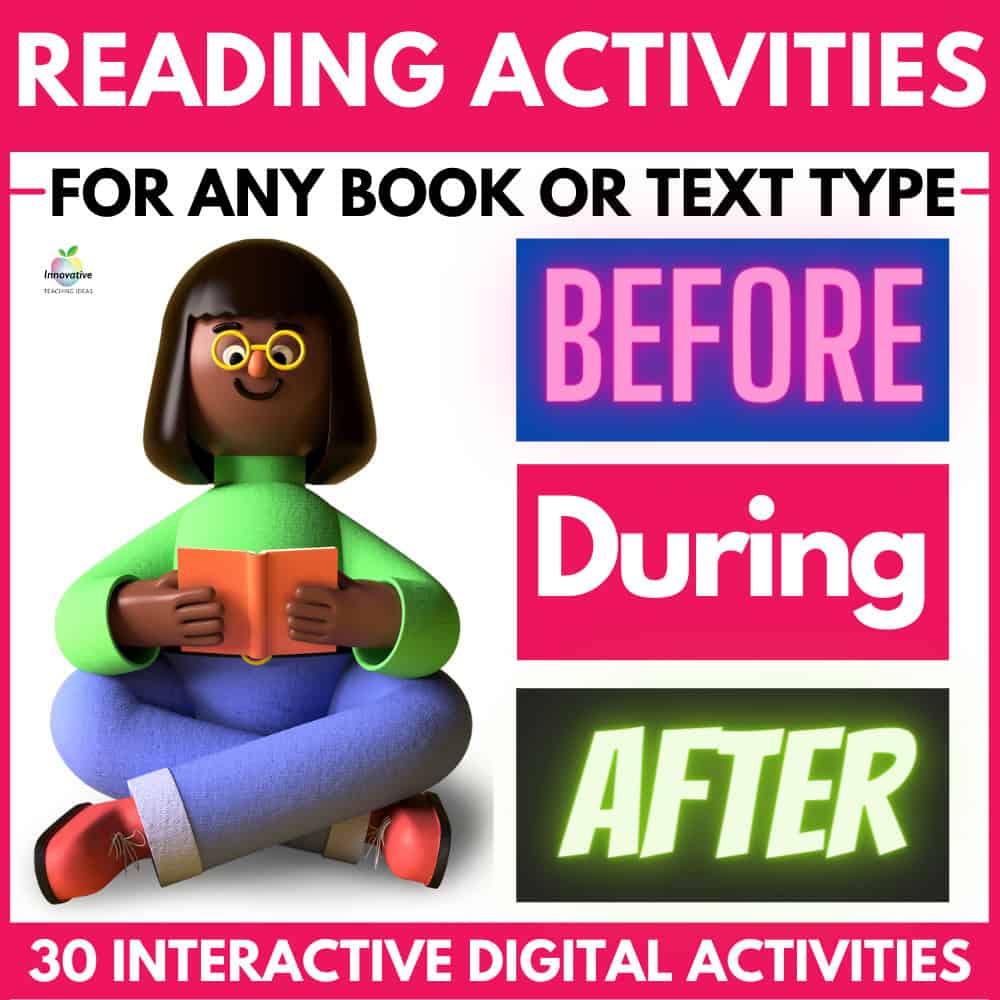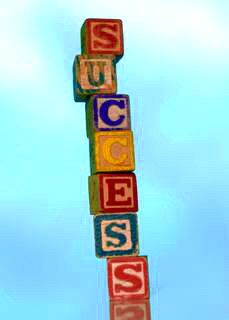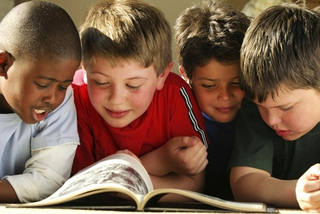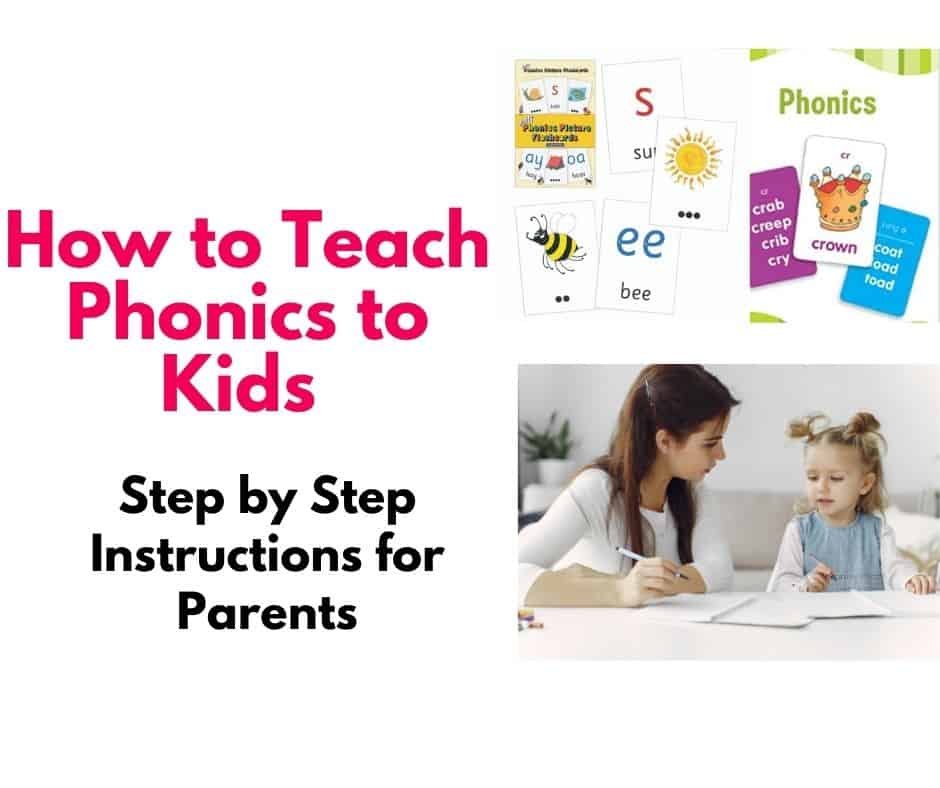How to teach phonics to kids
How to teach phonics to kids
How to Teach Phonics to Kindergarten
When a child initiates his learning career i.e. (usually begins when he starts with his school), a lot of changes await him. From making new friends to developing confidence, to be able to perform well and communicate with people around all this is what he learns from the very first day of his educational career. He of course learns many of the things from play but to be able to understand things requires a systematic approach.
Then comes your role as a mentor, teacher and a supporter to help your child perform his best in every stage of his life. Things might have changed from when you were at his place and the ideas along with the way of thinking might require new strategies. Once you come to know about phonics, the next thing is how to teach phonics to kindergarten?
Importance of Phonics:
Phonics involves learning via letter sounds to help you read and understand words. You need to know how to teach children to read using phonics for better understanding of words. Children who are in pre-school usually develop an understanding of sounds various alphabets make. Their listening ability is way stronger than the reading or writing. After that when they enter the primary, they are made learn the letters of alphabets systematically along with words like c-a-t and sh, ss and es sounds. Once they get to learn how to read words, they develop an understanding of pronunciation of different words combining alphabets.
What Children will learn and How to help them with it?
Below are a few ways to guide you help your little one improve learning through phonics and tips on how to teach children to read using phonics.
1) Keep it fun:
Don’t forget that the aim of teaching phonics to kindergarten is to make your child learn through sounds to grasp his interest and keep him engage in his free time. It should be fun to keep the interest of the little learners and not to be turned into a chore just like a syllabus you follow in schools. He will learn best if it involves his interest. Don’t keep it too long, 10-20 mins daily is enough to incorporate learning phonics for kindergarten and make sure he is not exhausted and is free to deliver his focus. Even if at the end you realize to a point that he has become a good learner, don’t give a pause to his reading process.
Seeking for coloring Christmas activities for kids?
This app is filled with colorful Christmas activities for preschoolers and kindergartners to bring out the hidden artist in them. It will allow kids to pick colors of their own choice and enjoy an amusing coloring experience.
2) Build Strong Foundation:
While teaching phonics to kindergarten one thing you need to make sure is the focus on sounds first instead of pictorial representations or letter names. The recognition of the sound helps to incorporate and make them be able to incorporate reading.
3) Incorporating Phonics in Nursery Learning:
The most important part to keep in mind is the interest of a child triggers his mind and engages him to learn things more frequently and quickly. Know what your child finds interesting and for example if he is into vehicles, see how many different noises he is able to get and differentiate. Check and observe if he can copy it, sing songs along with them. Say rhythms and let them copy you.
4) World Building Rocks:
Word building rock helps children establish learning and know how about how words make sounds. You can also try by making cards of different alphabets and ask children to make different words by assembling them. This will give them a broader and better understanding of sounds different letters make and how to make words out of it. You must know the tricks to grab the attention of the little learners while starting with how to teach phonics to kindergarten.
5) Keep practice:
A little practice can lead to great improvement at anything. Have discussion or random talks about it daily. Even if you are not being into an atmosphere of learning with notes or books around you. You can talk about it verbally and still learn. While cooking, driving or playing you can make them aware of sounds different letters make. Go for quick challenges or short activities.
6) Read and Spell Along:
Reading improves your learning and ability of recognition of words and alphabets making them. It should be of a regular habit in order to improve understanding of words and initiating with how to teach phonics to kindergarten. The more you practice, the more it gets better and that’s the main core of how to teach children to read using phonics. Spelling letters provides and helps learn sounds of each one and keep it in your mind.
Shape Sorter
Learn shape with Shape Sorter by The Learning Apps. This shape game for kids will…
Math Addition
Maths Addition by The Learning Apps redefines how kids learn and understand maths. Your kid…
Dino Counting Games For Kids
Counting games are a great and fun way to learning numbers for kids who have…
Letter Tracing Apps For Kids
Learning the ABC alphabet is an easy thing with this fun entertaining and educational app.…
7) Step by Step:
To help make children learn association between letters and its sound requires time and a step by step approach is what helps. It has to be broken down into steps in order to make the learning process more practical and beneficial. At first, the oral manipulation has to be taught moving forward to reading and writing.
8) Phonics Fun with Primary:
Keep going with the games and activities while teaching phonics to kindergarten that builds interest. Encourage them to read out books they like and even if they bring books from their school, involve with them to read out loud. Help them sounding any word they struggle but not always. You can stop at the middle of reading and ask him to say the sound from where the next one begins.
9) Word Hunt:
Play hunt the word you know he knows or you made him learn. You can do this while you are reading him a book. Let him seek for the word for example ‘Can you look for words that start with S’ or ‘Find the word baby’. Encourage him to look for and learn words from around him like the posters, street signs or signs outside the shops and praise him if he does to boot up his encouragement. If they stumble a word don’t rush forward to help them out but let them try till end and let them try without any help.
10) Phonic activities:
Children tend to learn more when fun incorporates any learning activity. Teaching them sounds and letters is not a onetime task and one can always get fed up with learning the same thing over and over. You can involve fun phonics activities such as ‘flash cards’, ‘Letter sound race’ or ‘smack the letter’ to persist the interest of your child.
It’s never enough how much you emphasize on why letters and learning language is important. While teaching phonics to kindergarten child remember you are working on building his foundation that he will carry for the rest of his life. Phonic activities is tried which proves excellent outcomes. This article shares what methods you must adapt on how to teach children to read using phonics.
Share This
Related Posts
— Ads Free + Full access
— One Time Payment
Communities
Services
Contact Us
Copyright 2021 The Learning Apps. All rights reserved. Privacy Policy
How to teach children to read
Teaching children to read is one of the most complicated, arduous and time-consuming parts of teaching English. There’re many approaches to teaching to read nowadays. However, I’ll focus on two popular and effective methods: Phonics and “Look and say”.
Phonics
Phonics is a method of teaching young learners how to read which focuses on how letters make sounds, and how these sounds make words. This approach is not meaning focused, it is only about decoding and pronunciation. Teachers are to put accuracy before speed because fluency (i.e. speed, accuracy, expression, and comprehension) will come with time.
Phonics is the study of the relationship between the spoken and written language, i.e. phonemic awareness and letter shape. Each letter or combination of letters represents a sound or sounds. The information is codified, as we must be able to recognise which symbols make which sounds in order to read. Children are taught 44 letter sounds, which is a mix of alphabet sounds:
This information is found in the Alphabetic Code. There’s no one order you choose to teach phonics, but it’s definitely better to go from simple to more complex phonics.
“Phonics involves the teaching of the transparent alphabet (e.g. /k/ as in «cat») before progressing onto the “opaque” alphabet (e.g. /k/ as in «school»). In other words, children are taught steps which are straightforward and easy before being taught the complications and variations of pronunciation and spelling of the full alphabetic code”(© Wikipedia).
Therefore children are first taught graphemes and high-frequency tricky words, then digraphs and trigraphs; then less frequency tricky words. Moreover, it’s better to base phonics on the target vocabulary, so phonics are not separated from the main course and children learn as they go along.
What are tricky words?
These are some words which don’t follow easily recognisable patterns. Children have to learn these words in their entirety, by sight. Native speakers learn a lot of these at school through poetry, so one way to teach them is to say a word that rhymes with the tricky word (for example, “shoe” rhymes with “zoo” and “key” rhymes with “tree”). Another good way to practise them is flashcard-type games.
When a child is learning to read there are crucial things to learn:
Children are taught to read letters or groups of letters by saying the sound(s) they represent. For example, how to teach the word “cat” using the Phonics method.
Teachers have to read a full range of target vocabulary, sentences, comic strips, literature with the children and ensure that students have a full range of experience of activities associated with literacy such as role play, chants, songs, poetry, but children are not expected to ‘read’ text which is beyond them, and the method does not involve guessing the meaning from context, picture, and initial letter clues. If students do not know or cannot read, a teacher reads for them.
This is a great five-level course you can use.
Pros of Phonics:
Cons of Phonics:
Look and say
Phonics can be compared with the whole word, or ‘Look and say’ approach, which focuses on recognising words. This is a method of teaching reading based on the visual recognition and memorizing of words rather than by the association of sounds and letters.
For example, using a “Look and say” approach a child may be shown the word “cat” on a flashcard and is told, “cat”. The child, over time, then learns that when they see the symbol “cat”, they are to say the word “cat”. This way English becomes kind of a logographic language, that has thousands of detailed symbols that represent individual words.
Picture-words or sight words account for up to 75% of the words used in beginning children’s print materials. Sight word lists have been compiled based on high-frequency words, for example, the Dolch word list. These words are divided into levels which are prioritised and introduced to children according to a frequency of appearance in beginning readers’ texts.
Pros of “Look and say”:
Cons of “Look and say”:
Based on the information above I would recommend combining both methods to make teaching reading more productive, comprehensible, logical and consistent.
Teaching Phonics: A Complete Guide for Parents and Teachers
An Introduction to Phonics and learning to read
Throughout this article, I aim to provide you with a clear understanding of teaching phonics effectively in the classroom and offer a variety of strategies and proven ideas to teach phonics.
WHAT IS PHONICS? A DEFINITION FOR TEACHERS AND PARENTS.
Phonics can be defined as a body of knowledge and skills regarding how the alphabet works.
In the context of this article, phonics refers to the method of teaching a student to read by developing their phonemic awareness and an understanding of the links between these sounds and how we use the letters of the alphabet to represent them.
This understanding is essential to not only read well but to bridge the gap between reading and writing.
With a good foundation of phonics knowledge, students can quickly become confident readers and strong independent writers.
PHONEMIC AWARENESS IMPROVES READING FLUENCY
When students develop phonemic awareness and it greatly enhances their reading fluency which is a reading “superpower” allowing students to read with speed, accuracy and expression. Reading fluency greatly enhances students’ ability to read with intonation and energy that translates into expressive writing skills.
A COMPLETE DIGITAL READING UNIT FOR STUDENTS
Over 30 engaging activities for students to complete BEFORE, DURING and AFTER reading ANY BOOK
How To Teach Reading Using Phonics
The use of phonics, or synthetic phonics as this method is technically known, is an effective and efficient means of teaching young students how to read. For this reason, phonics is the primary methodology for teaching reading in the school systems of many English-speaking countries.
In English, there are around 44 sounds or phonemes. Given that there are only 26 letters used in the language, and that many sounds have more than one possible spelling, it is helpful that students learn the relationships between the letters and sounds in a straightforward and explicit manner.
To achieve this, phonics centers on the relationship between sounds and the ways in which they can be spelled.
It focuses on the letter and sound correspondences to enable students to break written words down into their component sounds, before later recombining them to read the whole word. This process is known as segmenting and blending.
SEGMENTING AND BLENDING
Rather than allowing students to struggle to recognize complete words, as in the whole word method, or to look for contextual clues to figure out what is being said in a text, phonics teaches students to look at the letters of a word and segment it into its component sounds, before blending these sounds back together to read the entire word.
For example, when faced with the word cat a student might run their finger under the first letter and make the initial /k/ sound, then /a/, and, finally, /t/.
Once they have successfully segmented these individual sounds, they then blend them together to say the word /kat/.
With practice, the speed with which students can look at a word, segment the sounds, and then blend these sounds together to read the word rapidly increases. This makes learning to read through the phonics method the most efficient way for most children to learn not just to read, but to write too.
DECODING AND ENCODING: THE BRIDGE BETWEEN READING AND WRITING
Initially, phonics reaps rich rewards for students in terms of the passive skill of reading. This is also known as decoding.
Later, the student’s knowledge of phonics can help them develop the active skill of writing or encoding.
For this reason, teachers will often weave emergent writing skills, such as letter formation, into their phonics lessons to take advantage of the opportunity to bridge this gap between the skills of reading and writing.
WHAT ABOUT SIGHT WORDS?
As effective as synthetic phonics are in teaching students to read, they won’t be enough on their own to unravel all the opaque mysteries of English orthography.
English is something of a mongrel language. Over the centuries it has been influenced by the German, Latin, French, Greek, and Celtic languages, among others.
This fact has led to many inconsistencies in spelling surviving in the modern language. Sometimes phonics won’t be enough to decode these words. That’s why it is important for students to learn to read some words by sight alone.
Sight words, or high-frequency words as they are also known, are those extremely common words used time and again in most texts. Many of them are phonetically irregular and follow no conventional spelling rules. For children’s reading books, sight words can account for up to 75% of the words in the text.
Therefore, it’s best to combine the study of phonics with the learning of these sight words for maximum effectiveness. This is something to consider when engaged in your long term planning.
The most effective strategy for learning these sight words is for discussion another day, for the remainder of this article, we will focus exclusively on the teaching of phonics.
THE STAGES OF PHONICS TEACHING
Before beginning to teach phonics, it is helpful to have a broad overview of the various stages that comprise a comprehensive synthetic phonics program. The following outline can serve as a useful general guide.
1. THE PRE-PHONICS STAGE
Prior to beginning to learn phonics in earnest (e.g. sound/letter correspondences), there are certain prerequisite skills that need to be developed, including:
● LISTENING SKILLS:
Children must be able to listen carefully to the sounds of speech. They must learn to filter speech sounds from other unrelated environmental sounds. This is usually best achieved by the playing of various listening games. When children have developed good aural comprehension, the game Simon Says is a fun way to further develop listening skills.
● SOUND REPRODUCTION SKILLS:
Once the children have learned to discriminate between various sounds, they should learn to reproduce these themselves. This is usually achieved by modeling the sounds carefully for the children and encouraging them to copy these with particular attention paid to the shape of the mouth when making each sound. The popular fun game Telephone is great for this.
● SEQUENCING SKILLS:
It is important for children learning to read to be able to sequence not only the events of a story but the individual sounds of the words they hear. They must be able to recognize which sound comes before or after another. They should also be familiar with sequencing language such as first, second, before, after, then etc.
2. SOUNDS AND ACTIONS
With our younger kids, it can be difficult to give them an anchor to ‘hold on to the sounds of language.
To help build such an anchor to these sounds, which will later help in linking sounds to written letters, actions are often connected to each sound to aid in memorizing them. This is especially useful in the early stages as it works well for the most basic of sounds.
For example, when making the /m/ sound, children could be taught to rub their tummies as if they have eaten something delicious while saying “mmmmm”.
Or, they could open their mouths wide as if they were eating an apple while saying the /a/ sound.
It is easy to come up with customized actions to go along with the various sounds of English and to then teach these to your class. Just ensure that you consistently use the same actions every time for a specific sound to avoid confusion.
Later, when students come to segment words into their individual sounds, they can use these actions to help recall them.
3. THE LETTER AND SOUNDS CORRESPONDENCES
Explicitly teaching the letter and sound correspondences lie at the heart of good phonics teaching.
It is essential to understand a little of the theory of synthetic phonics to be effective here. Here are a few important points to consider:
● Letter Names vs. Letter Sounds
It is crucial that children understand the difference between the names of the letters of the English alphabet and the sounds as these are two very different things. For example, the letter c is called /see/ but the letter itself usually denotes either a /k/ or /s/ sound. It may seem obvious, but many teachers not trained in the teaching of phonics overlook this distinction and unwittingly make learning to read much more difficult for their students as a result.
● Letters Don’t Make The Sounds
As the limited letters used in English are needed to represent many different sounds, it’s important to point out to students that letters don’t make the sounds, they are simply an option for showing the sound. Often there will be more than one way to show the same sound, for example the sound /s/ can be encoded in a number of different ways including as: s, c, ps. When you are asking your students to write something, you can make the sound and ask them what letter could they use to show this sound. This type of phrasing reinforces the correct relationship between the letters and sounds.
● Avoid The Lazy Vowels
It is also important to remember that when teaching the letters and sounds to avoid making the lazy vowel or schwa sound at the end of a sound. For example, when pronouncing the /k/ sound, make it crisp and short, rather than adding in an extra -uh sound at the end. This will make it much easier for the students to blend sounds together later.
HOW TO PLAN A PHONICS LESSON FOR YOUR CLASS
The detail and delivery of your phonics lessons will depend greatly on the specific situation of your students. However, there are some general points that it’ll be helpful to consider when planning a phonics lesson for your class.
● Keep Phonics Lessons Short and Sweet
To avoid getting bogged down and boring your kids, keep phonics lessons short. In and around 10 to 15 minutes is ideal and no more than 20 minutes. Remember, we want our kids to be lifelong readers and that means they need to enjoy it!
● Be Consistent
There is a lot of ground to cover here and consistency is key. If your students are learning to read, they’ll need to practice and study their phonics every day – preferably at the same time each day too.
● Keep on Moving
While a lot of reinforcement will be required over the course of the year, research has shown that keeping a brisk pace through a phonics program achieves best results. Don’t get bogged down waiting for everyone to get everything before moving on. You will be revisiting the material.
● Keep Things Fun!
Learning to read should be a positive experience, particularly as learning to read means acquiring one of the most empowering skills a child will ever have. To keep things fun, be sure to incorporate lots of enjoyable activities and games into your phonics lessons.
Phonics Games and Activities
I Spy
This perennial classic is a fun way to get some phonics practice in. You can adapt it to say “I spy with my little eye something beginning with…” and say a sound rather than a letter. If you wish to work on letter recognition rather than sound, simply hold up the letter itself quietly.
Sorting Activities
Sorting activities are a great way for students to practice their phonics knowledge and can take on an almost infinite number of variations. For example, younger kids may enjoy sorting objects into 2 hula hoops on the floor which are labeled with their initial consonant sounds, while older kids might work on consonant blends.
Bingo
Bingo is another very versatile game that can be used to practice sound and letter recognition. Simply decide what you want to work on and place those into suitably sized grids (9×9 works well). These could be initial consonants, vowel digraphs, or pictures of nouns. If you set up some blank grids on laminated sheets, you can save yourself a lot of prep time too. Simply write a broad selection of sounds you are working on onto the whiteboard. Students can select 9 of them to fill in their laminated grid. Now each student will have their own unique bingo card!
Partner Reading
Partner reading is a great way to practice listening skills, as well as reading. Organize students into pairs and provide them each with a copy of the same text. One partner reads the text while the other follows closely with their own copy. The listening partner helps the reader decode difficult words when they have trouble. After a time, partner’s switch roles. This usually works best when partners are of a similar ability. You can further differentiate here by choosing different texts to suit the abilities of each pair.
Shared Writing
Shared writing is an effective means of introducing independent writing activities. For beginning students, it may take the form of simply spelling a basic CVC word together. For example, to work on the spelling of the word cat, you could draw three cradles on the whiteboard and saying each sound, in turn, challenge the students to come up and write the corresponding letter in the cradle until they have written the word C – a – t.
As we can see, the teaching of phonics is an extremely efficient and effective means of teaching our children to read and, ultimately, write. It works on training students to be able to hear the various sounds of English, identify these sounds, and link these sounds to the symbols we call letters.
While there are other methods of learning to read employed with emergent readers in the classroom, in two decades of teaching I’ve never seen another methodology come anywhere close to phonics for overall effectiveness.
And, best of all, phonics can be a lot of fun to learn and teach too!
Learn How to Teach Phonics
Step By Step
In this article I will show you the crucial early stages of how to teach phonics to your child.
I plan to take you step by step, in a systematic way, so that nothing important is missed. Many early readers do not learn this stage thoroughly enough and end up confused.The secret is in following these simple steps of how to teach phonics.
If it’s taught well, your child will develop the skill to sound out (without guessing) at least 100 words by the time they are around 5-6 years of age.
Learning Letter Sounds
I’ll show you how to teach phonics using methods I know work exceptionally well, with both children and adults.
The first level in how to teach phonics involves showing your student how to recognise the sounds of the alphabet letters.
So that your child doesn’t muddle letter names with the sounds letters make, focus solely on the sounds. Don’t ask them to sing or chant the alphabet letters. It will only confuse them at this stage.
Many children from the age of 4 can effortlessly learn the names of the letters of the alphabet by singing the Alphabet Song. It is important that they do learn the letter names but focus your time at this stage on teaching them the sounds the letters make, which is a new and greater challenge.
Gauge Your Child’s Pace
At kindergarten or in their first year of school your child may be taught one letter sound a week. This also probably involves learning to write the associated letter. It’s possible that they are capable of learning more sounds than this. Every child is different.
It’s important that you teach your child at their pace, not yours. You might find 5-10 minutes is a long enough period to spend at a time. Or they might be prepared to work for 30 minutes. It all depends on their attention span.
Remember that if you are working with your child after a full day at school they may be tired. Keep your interactions with them light and fun. Avoid stressing them or they will switch off.
Teach In This Order
I’ll let you into the first secret of how to teach phonics. You don’t need to teach your child the alphabet sounds in their normal sequence …a b c d.
Their classroom teacher might have a particular sequence of letters they want their class to learn. Chat with them about this and ask if it is appropriate for you to do some teaching at home. Try, where possible, to work in with the teacher as it will make your child’s learning easier at school.
I teach the sounds in this order.
a m s t c r b f h d n v p e l j w i g o k u q x y z.
The sounds do not have to be taught in the exact sequence above but I have found this format works exceptionally well for my students.
I’m showing you how to teach phonics using this sequence for several reasons
Start Blending Sounds When Your Child is Capable
Teach children how to blend sounds together as soon as they have learned a few of the alphabet sounds. Many can do this between the ages of 4 and 5 years.
As soon as they know that the letter a says a as in the word apple and m says mmmm as in the word mountain they can begin. Follow on with as and at. I have explained this in a lot of detail on my Free Phonics Lesson page.
Don’t Encourage Your Child to Guess
One of the most important lessons in how to teach phonics involves not allowing your child to guess words.
Ask them to sound each word out. Do not tell them what the word says. They need to work it out by themselves, sound-by-sound from left to right. This teaches them that they can tackle words and decode them without fear.
Guide them gently but don’t tell them. If they are stuck, help them to work out just the sound, without telling them the whole word.
A word of warning : Teachers often send “readers” or small books home to be read for homework. Children enjoy these. After reading them with you a few times some children seem to be able to read them without help. That’s often because the repetition and colourful pictures contained in them make it possible for them to memorise the words.
Children who guess words rather than sounding them out have developed bad habits. They aren’t really reading. Guessing or memorising words is a difficult habit to break. Teach them decoding skills from the beginning.
Sight Words Are Different
Most words your child will come across need to be decoded or sounded out. There are some words, however, that can’t be quickly and easily decoded. These are called sight words. Your child is required to learn many of them in their first two years at school.
Sight words are lists of words that are most often used when we read and write. They are taught as sight words because
Examples include …I the me here that went to said come
Teachers will give your child sight words to learn in a series of small lists. It is important that you don’t make up lists of your own as you could upset the structured reading process. These words have been carefully researched and are understood to be the most useful. For more on how important sight words are click on What are Sight Words.
Blending Words With Three Letters
If you want to know how to teach phonics at the next level, introduce three-letter words, each with a vowel in the middle.
These are referred to by teachers as CVCs (which simply means consonant, vowel, consonant.) Teachers also refer to them as word families because they have sounds in common.
1. As your child has already learned how to blend m, you could start with three-letter words in the am word family.
Try these: ham Sam dam jam, pam, ram, yam
Blend them smoothly together from left to right. Tell your child to s-t-r-e-t-c-h each sound.
2. The at family comes next and includes words like cat fat sat rat hat
3. This is followed by the an family, can, man ran pan then the et family, met pet set let bet get
4. Continue with other words families which have different vowels and endings, for example, bit hot mud tub
5. Once they have mastered the five different vowels, see if they can read, smoothly, the following words
jet man lip sat fog cup bed wag dot gap hot fox vet
How To Teach Phonics From Here
The next stage is to learn Consonant Blends.
then end blends like …lk as in milk, nd as in hand, nk as in blink
Once your child reaches this point, they will be capable of reading many words.
Be assured that as your child masters these first steps, they are well on their way to becoming competent readers. It will be one of the greatest gifts you can give them.
How to Teach Phonics to Kids (Step by Step Instructions for Parents)
Wondering how to teach phonics to kids? Here I will try to cover frequently asked questions around phonics, step by step instructions on how to teach phonics to kids when to get started, and an easy roadmap you can follow. You will also find phonics resources (books, activity books and pdf printables) that you can use for teaching your kids
When we were growing up – we did not have phonics and as a result there is a lot of ignorance about phonics in general.
Here I would try to answer most frequently asked questions around phonics so that it becomes easier for everyone to be able to teach phonics to your child.
TRENDING>>>>>> Check out this post on TEACHING NUMBERS TO TODDLERS
What is Phonics?
Phonics is a way or method of learning how to read and write by the study of sounds. It involves teaching sounds made by via letter sound relationships.
So English uses letters in the Alphabet to represent sounds. In Phonics kids are taught sounds that each letter or group of letter makes and thus this information helps kids learn how to read.
So phonics helps kids with sound based rules that helps them to read and write easily.
For example – children will learn sound of letter m a t which they will sound out as /mmmm/ /aa/ /t/) and then will be able to blend the sounds together to read word mat. Or if they hear mat they would be able to decode the sounds to understand how to write the word ‘mat’.
Why is Phonics important?
Phonics help kids learn how to read and write by using letter sound knowledge. This skill helps our kids to read or write unfamiliar words as well.
If we teach our kids 10 words by rote learning they would still know only 10 words. But if we teach them the sounds of 10 letters they can read many more words with those letters of the alphabet.
Thus in Jolly phonics the first sounds taught are s,a,t,i,p,n. As with only these sounds they can read and write many words like sat, tin, pin, tip, sit, and so on.
This knowledge gives the confidence.
Thus Phonics helps kids to use skill and strategy to decode new words. Phonics provides a foundation make reading easier.
When is Phonics taught
Children are ready to start phonics around 3 to 4 years of age.
Also please wait for your kids school to start phonics to avoid confusing the child. As different schools may follow different methods of teaching.
Avoid buying kits as most of them are not based completely on jolly phonics and may confuse your kid more.
In general below is the sequence followed:
Types of Phonics
How to teach Phonics to kids
Also the number of letters in the Alphabet are different from number of sounds taught in phonics. In phonics we have 42 sounds. Because in some cases two letters may make a single sound for example th, sh and so on. These are referred to as Digraphs (2 letter and 1 sound).
So to simplify start with simple letter sounds ( 1 letter and 1 sound). For each letter we introduce letter name, sound, action, story and letter formation.
How to teach letter sounds to kids
Introduce each letter sound with fun action, stories and songs.
Also one frequently asked question is should I teach writing along with letter sounds?
When you are introducing each letter – also introduce letter formation to kids
So each day you can introduce one letter – by its story, action, its sound and how to write it. Start writing in air and the practice it on any page or worksheets. You can also do tracing for each letter on salt trays or create them using playdough or trace them on sandpaper letters like these.
In Jolly Phonics the alphabet sounds are taught in a particular sequence as below
Letter sounds worksheets for kids
You can start with downloading these letter sounds phonics worksheets for kids. They cover alphabet sounds activities
Also you can get these downloadable phonics flashcards for kids They cover objects starting with each letter
Once your child is able to identify sounds you can get these missing letter sounds worksheets
Jolly phonics worksheets for kids
You can also buy Jolly phonics pupil and teachers books from amazon. I have listed them below
Once you have taught letter sounds to your child. Practice them regularly via different activities and worksheets.
Ask your child to hear and identify beginning sounds and ending sounds in words.
Phonics key skills — common terms used
Apart from alphabet sounds you would also need to teach below skills
Teach Blending
Blending is the ability to say sounds together to form words.
Teach Segmenting
Segmenting is the ability to break down words into individual sounds
Teach Tricky words or sight words
Tricky words or sight words do not follow the rules of phonics. So a kid has to learn them as they are. For example a child should be able see the and understand it is the word ‘the’.
How to teach phonics step by step
What are CVC words?
CVC words are 3 letter words that begin with a consonant, have a single letter short vowel sounds and then another consonant.
Example cat, mat, sad, pen, sun, pit, dog,
CVC words worksheets pdf for kids
You can download these CVC clip cards to practice beginning sounds. If you want to learn family wise
If you would like to get a complete CVC pack go for this HUGE CVC bundle. You will not need individual worksheets then. Just download print and keep practicing.
If you would like to get the worksheets based on each CVC word family here is the list:
